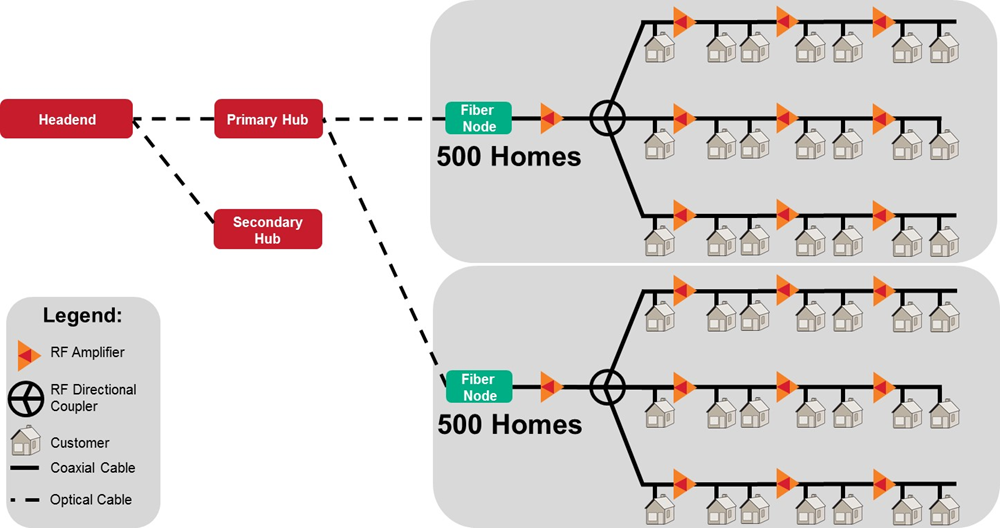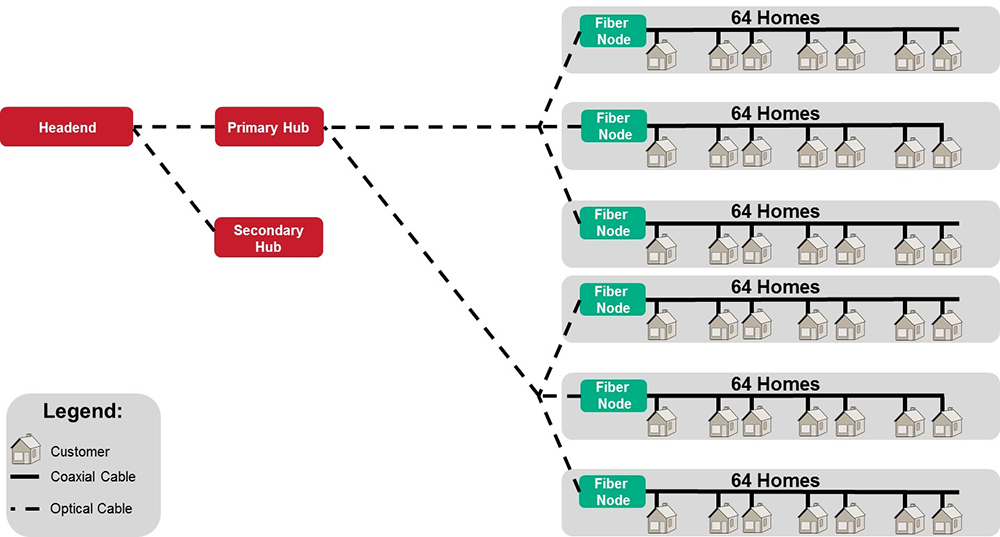Measure Twice, Cut Once: Fiber Deep Planning for Cable Operators
Carpenters and builders all know that if you cut wood improperly, the piece is quickly rendered unusable. So, the little saying, “measuring twice and cutting once”, warns to plan and prepare for something in a careful and thorough manner, before acting – great advice.
As cable operators respond to the thirst for services like Ultra-High Definition (UHD) or 4K broadcast, ultra-high-speed data (HSD), high definition (HD) video, and countless IP devices interconnected can only be satisfied by pushing optics deeper into their existing fixed-line Hybrid Coaxial Cable (HFC) network infrastructure.
And while making a mistake cutting a piece of wood will cost you some time and money, making the mistake of improper fiber placement can be catastrophic for cable operators.
Designing Cable Networks with Tree and Branch Topology
In the beginning, cable networks were built with a tree and branch or shared topology, as a one-way broadcast topology. Cable fixed-line infrastructure was designed to be similar, no matter where you were, with the minimal number of actives and expensive intelligent devices. There are three sections to tree and branch:
- Trunk
- Distribution
- Drop
Trunk coaxial cables were used to connect to distribution cables, then to a drop cable and finally to the customer. Each of these sections were connected using Radio Frequency (RF) coaxial devices, including trunk and distribution amplifiers, directional couplers, and taps.
Designing Cable Networks with HFC Topology
In the HFC era, trunk sections, and some distribution, were replaced with fiber nodes, greatly improving capacity and operations.

Over the years, HFC networks have been the enabler for high end two-way services, but new technological developments within the cable industry are transforming the existing cable architecture into a state-of-the-art interactive conduit. To the extent that cable operators are bound between two major concerns:
- Escalating outside plant operational and maintenance costs, negatively affecting cash flow growth
- Readying fixed-line infrastructure for new services, depressing product time-to-market
The point in HFC’s lifecycle is getting close to the breaking point, as end-user demand and competitive services like Over-the-Top are stressing the HFC part of cable operator’s ecosystem. At the same time cable operators are rethinking the headend, as video traffic continues to expand throughout the MSO network.
Cable ecosystem consumption models have fundamentally changed.
Designing Cable Networks by Pushing Fiber Deeper
Pushing fiber deeper into the HFC network has two significant effects to the cable operator ecosystem’s fiber trunk, coaxial distribution system and drop. First, pushing the fiber node closer to the customer allows a reduction in service group size or homes passed, while eliminating expensive power hungry coaxial amplifiers. Secondly, and maybe even more important, cable operators can leverage their existing fiber by adding Dense Wave Division Multiplexing (DWDM). DWDM is fiber optic technology allowing multiple wavelengths each operating at very high bit rates over the same fiber optic cable.
By eliminating all actives (i.e. amplifiers, power inserters, etc.), reducing service group size, using passive coax, and DWDM, significant operational and capital expenditures can be achieved, while solving the capacity and access concerns.

Even more importantly, upgrade costs for pushing fiber deeper into the network are relatively low, since broadband coaxial cable to the home is already in place, making the total investment in broadband/digital technology cheaper for cable than for competitors.
Plan, Plan, and more Planning
Cable operators are no stranger to significant upgrades to their fixed-line infrastructure, doing so many times in the past couple of decades. Pushing fiber deeper will take considerable time and effort with informed, deliberate, and thoughtful decisions by cable operators to reduce customer downtime or impact service revenue.
More fiber that leverages DWDM will need to be installed, as fiber nodes are placed on shorter branches. Cutting branches, so to speak, into smaller service groups will need to be engineered for future bandwidth growth by spacing each of the smaller branches within an optical span budget for 100GbE, but starting only with 10GbE.
The good news is that digital optic technology is relatively maintenance free, and has matured to having an abundance of readily available and economical resources to assist.
Still, cable operators need to continue to measure twice (or thrice!) and cut once to save both time and money as it pertains to their tree and branch network.





